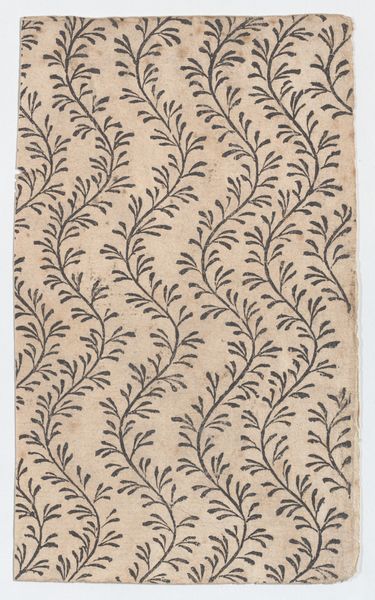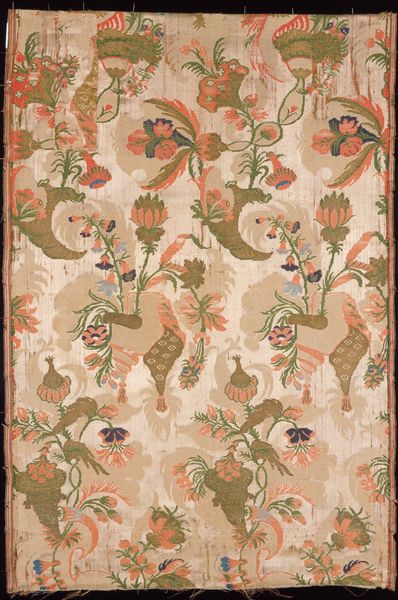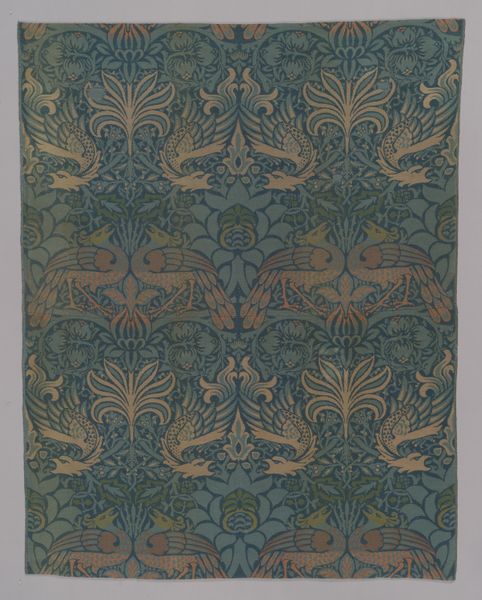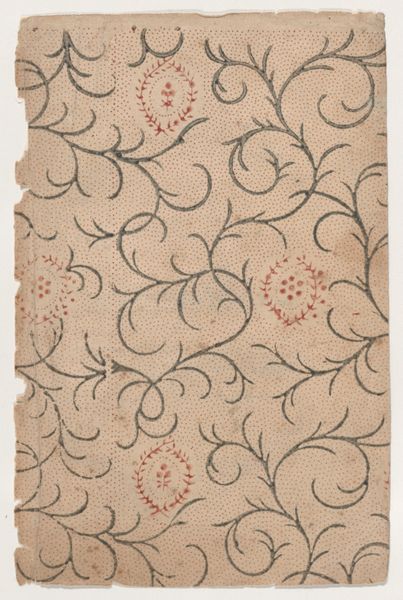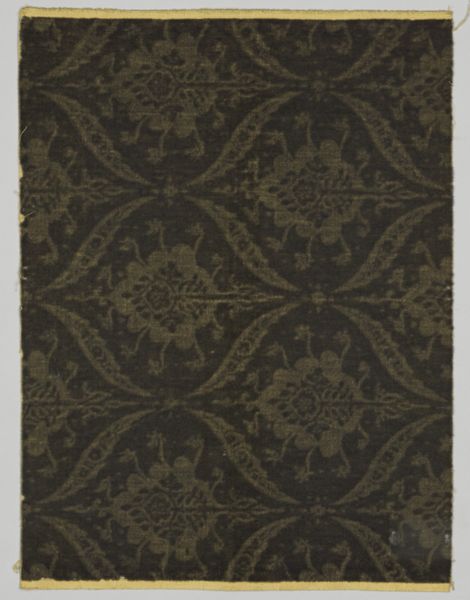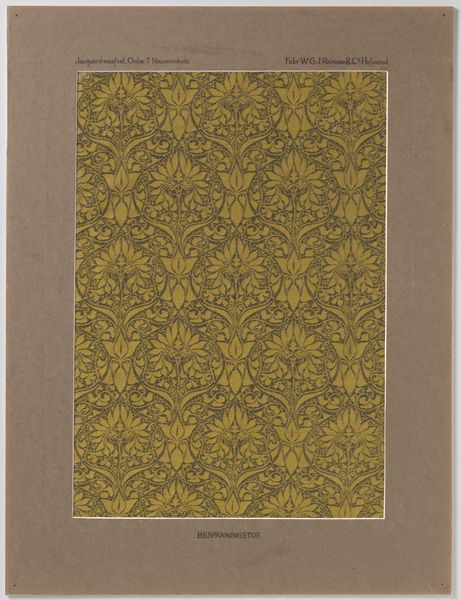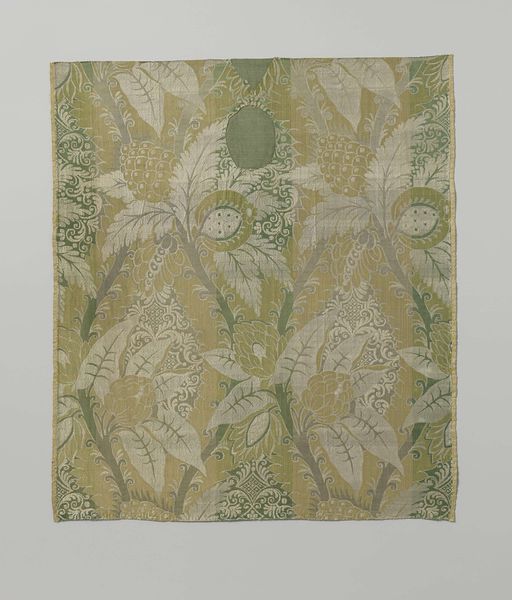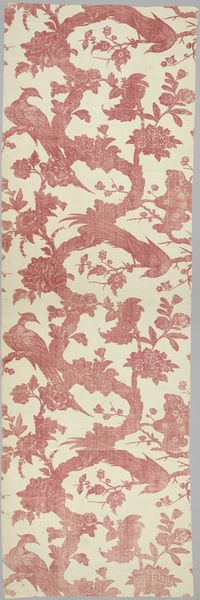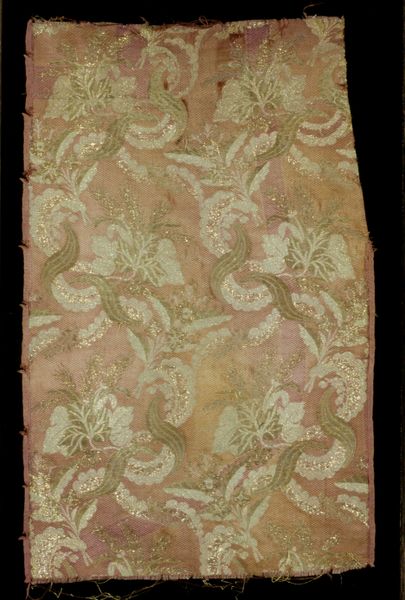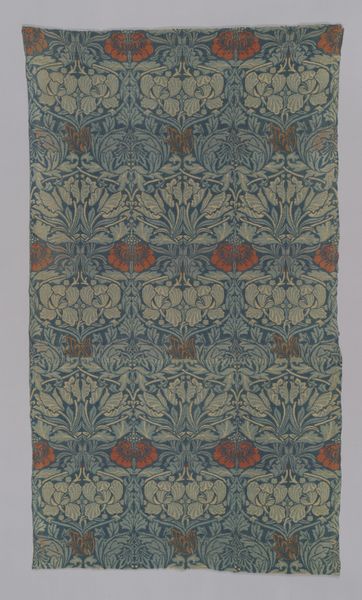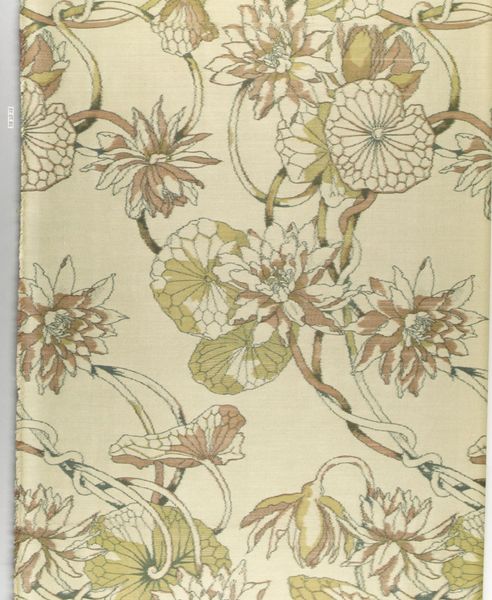
print, textile
#
organic
#
art-nouveau
# print
#
textile
#
abstract pattern
#
organic pattern
#
decorative-art
Dimensions: 291.9 × 121.1 cm (114 7/8 × 47 5/8 in.) Point repeat: 42.8 cm (16 7/8 in.)
Copyright: Public Domain
Curator: At first glance, I find myself struck by the somewhat somber mood. The deep blues offset by the golden flowers... it's quite evocative. Editor: Indeed. Here we have "Panel," a textile design by Arthur Silver, created in 1896, now residing here at The Art Institute of Chicago. It is a superb example of Art Nouveau's integration of organic forms. Curator: The way those stylized poppies repeat, they give a sense of manufactured opulence, really speaks to the burgeoning middle class eager for access to elevated design at the turn of the century. The aesthetic aspiration becomes almost a social signifier, wouldn't you say? Editor: Absolutely. From a formal standpoint, the artist skillfully plays with positive and negative space. The swirling stems and leaves create a dynamic rhythm across the panel. Note also how the colour choice impacts the legibility. It suggests movement, an intentional strategy given the design's likely purpose as wallpaper or a furnishing fabric. Curator: Certainly. We can think about how these kinds of textile patterns not only beautified domestic environments, but in fact played a vital role in shaping the visual culture and influencing notions of modern taste during the late 19th Century. Editor: Exactly. I’d just add that the very flatness of the pattern, a two-dimensional treatment of typically three-dimensional organic material like flowers, creates a very striking tension, a dynamic opposition of dimensions, I think. The Art Nouveau is interested in flatness as much as anything, it flattens its subjects while retaining their intrinsic aesthetic values. Curator: A brilliant way to consider the piece's legacy and purpose. Ultimately, this pattern provides insight into its culture and social milieu through its aesthetic decisions. Editor: Agreed. And reflecting upon its materiality reveals a sophisticated design with timeless qualities of line, shape and contrast that endure today.
Comments
No comments
Be the first to comment and join the conversation on the ultimate creative platform.
